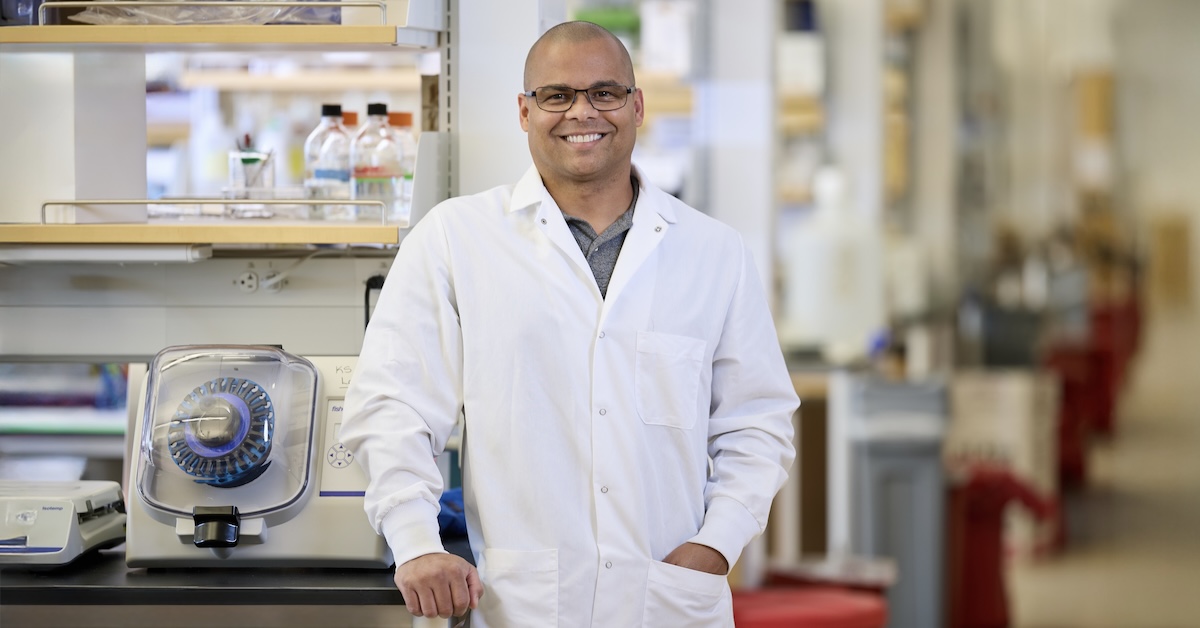Finding a drug for age-related muscle loss
Finding a drug for age-related muscle loss
September 30, 2025

Kleiton Silva investigates the cellular drivers of age-related muscle loss.
In the second half of adulthood, the human body naturally loses muscle mass and strength. This process accelerates late in life and can lead to debilitating weakness. Exercise is an excellent approach to counter this decline, but working out isn’t realistic for everyone affected by this condition.
Kleiton Silva, Ph.D., an assistant professor of biomedical sciences at Cooper Medical School of Rowan University, wants to develop a drug to help. His lab has recently received funding from the U.S. National Institutes of Health (NIH) to study a new way to intervene in cellular changes that lead to age-related muscle loss and dysfunction, known as sarcopenia.
“I am not trying to replace exercise, but to find something that makes it more feasible and more effective,” Silva says. “I’d like to find something that can help elderly people who are affected stand up and say, ‘I feel better, I can exercise now.’”
The loss of muscle tissue and strength can accompany conditions such as cancer, chronic kidney disease, and heart failure. However, this deterioration occurs on its own in sarcopenia, through different changes to muscle cells in otherwise healthy older people.
Those affected slowly lose the strength they need for routine tasks and become vulnerable to dangerous falls and bone fractures. Exercise and improvements to diet are the only established treatments for it; the Food and Drug Administration has not approved any drugs to treat sarcopenia.
This condition’s link to aging means the toll is almost certain to grow. Projections from the U.S. Census Bureau indicate that, by 2050, the number of Americans 65 and older will increase by nearly 30 percent.
Research indicates that in sarcopenia—and aging in general—our cells’ ability to break down and recycle waste through a process called autophagy declines. Without adequate autophagy, debris accumulates, leading to damaging inflammation.
After he began studying sarcopenia, Silva identified a method to activate autophagy. A preliminary study combining exercise with a drug that specifically targets autophagy looked promising. His team documented improvements in strength and endurance, which researchers found were accompanied by an increase in a molecule called orosomucoid 1 (ORM1).
Two NIH grants will allow him to follow up on these findings. A four-year grant covers research exploring the suppression of autophagy. It also funds experiments testing the combined effects of enhanced autophagy and endurance exercise over a longer period.
Experiments funded by a three-year grant focus on ORM1 and will investigate its potential as an anti-sarcopenia drug. Both NIH-funded studies are being conducted using translational models.
Even if ORM1 turns out to have promise as a drug, it will not prevent sarcopenia, Silva says. That’s because muscle loss is a natural process of aging. Ultimately, Silva hopes such a therapy could help people maintain better health during their later years.
“People are living longer, but we do not want to live longer in a bed,” he says. “We want the elderly to enjoy their grandchildren, traveling—everything they worked for when they were younger.”